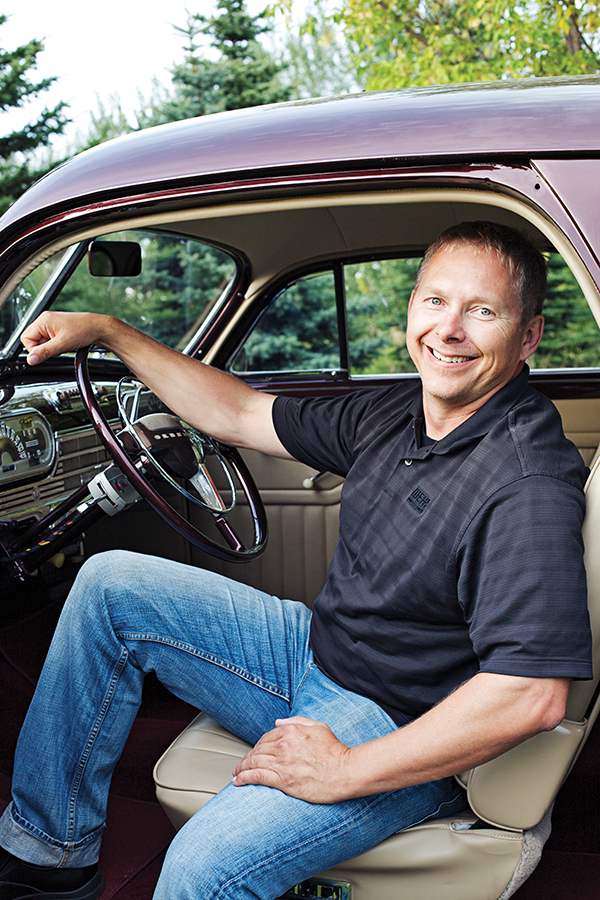Smith moved to Edmonton from Calgary at the age of seven. While he had a slight interest in bikes growing up, it was his cousins, a group of brothers who were into car culture, that led him to taking a chance on restoring this particular Olds. “For people my age in high school, it was the Camaros and muscle cars,” he says while driving through his residential area, trying to find smoother roads. “It’s what they grew up with. I guess I must have an old soul.
“My era of car is more for people 60-plus. They’re always giving me the thumbs-up going down the road. That, and the really young guys like my car.” Not 10 minutes later, Smith and I pause to find a guy in his mid-20s with a rockabilly style staring at Smith’s car from the window of his own aged truck.
“Sweet car,” he says, grinning.
Smith waves a “thank you” and smiles as we drive off. “Everyone’s tastes are different, and when you build a car, you can build it to your taste.” The white-wall tires, lowered body and chrome were all part of Smith’s particular flair, described as “low and slow.”
However, some like to modernize. Smith tells a story about an acquaintance who completely outfitted his car with power locks, windows, everything. But when the battery burst into flame, the doors weren’t able to open. Fortunately, the driver-side window was open just enough for the driver to squeeze through to safety. “I’m not one for power stuff,” Smith concludes. “It doesn’t fit my image.”
So if art says something about its creator, what does this car say about Smith? “I’ve never really compared it,” he chuckles. “It’s just a child to me. You look at a car and you see a vision. And from point A to that vision is a long journey. But once you get there, you’ve got something that nobody else has. I guess to go that extra mile; that was my vision.”
